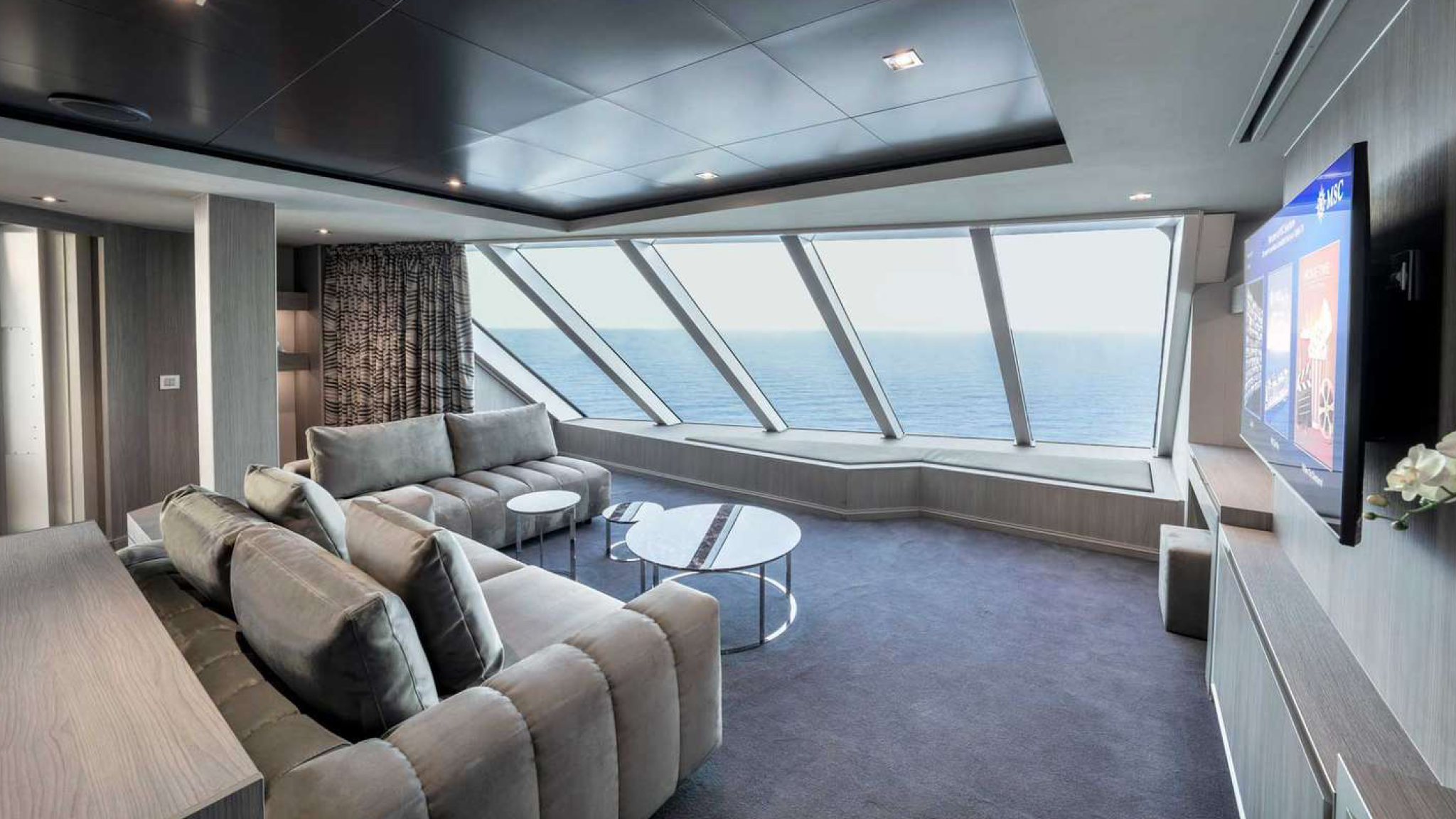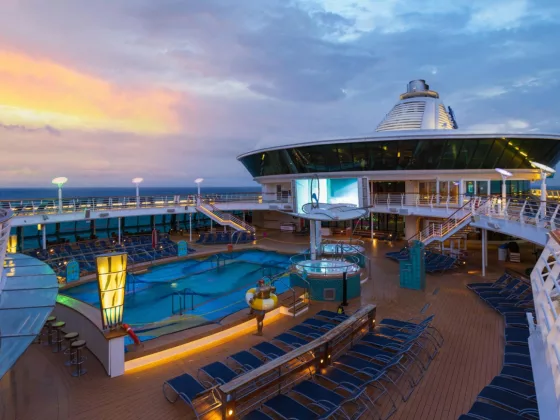12 Fascinating Fun Facts About Cruise Ships You'll Want to Share
Cruise ships are engineering marvels that combine luxury with incredible technical achievement. These floating resorts carry thousands of passengers across oceans while providing entertainment, dining, and comfort that rival the best land-based destinations. Here are 12 fascinating fun facts about cruise ships that reveal just how remarkable these vessels truly are.
1. Cruise Ships Are Engineering Marvels

The largest cruise ships today stretch over 1,188 feet long—that's longer than three football fields placed end-to-end. Royal Caribbean's Wonder of the Seas weighs 236,857 gross tons and carries nearly 7,000 passengers plus 2,300 crew members. The steel hull is approximately 1.5 inches thick, using specialized marine-grade steel that can withstand decades of ocean exposure while maintaining structural integrity.
These impressive vessels aren't just long—they're incredibly tall too. Speaking of height, here's another fascinating fun fact about cruise ships that might surprise you.
2. They're Taller Than Many Landmarks

Modern cruise ships rise more than 230 feet above the waterline—higher than the Leaning Tower of Pisa. This impressive height creates unique challenges, which is why ships use massive stabilizers (essentially underwater wings) that extend up to 30 feet from the hull to prevent excessive rolling in rough seas. These sophisticated systems can reduce a ship's roll by up to 90%, ensuring passenger comfort even in challenging conditions.
The sheer size of cruise ships requires enormous power systems. This next fun fact about cruise ships reveals their incredible energy capabilities.
3. They Generate Enough Power for a Small City

Large cruise ships produce over 80 megawatts of electricity—enough to power roughly 80,000 homes simultaneously. Rather than connecting engines directly to propellers, modern vessels use diesel-electric systems where multiple engines generate electricity for all ship operations. The Harmony of the Seas houses six marine diesel engines collectively weighing more than 2,000 tons, consuming approximately 66,000 gallons of fuel daily at cruising speed.
All this power supports numerous ship systems, including some impressive water management technology. Let's look at this surprising fun fact about cruise ships' self-sufficiency.
4. They Create Their Own Fresh Water

A large cruise ship produces up to 250,000 gallons of fresh water daily by converting seawater through evaporation and reverse osmosis systems. This water undergoes testing that often exceeds standards for land-based municipal systems, ensuring passengers receive clean, safe water regardless of their location at sea. The water management systems also process approximately 1,000,000 gallons of wastewater daily through advanced treatment facilities.
This impressive self-sufficiency extends to food service, which brings us to our next fun fact about cruise ships and their culinary operations.
5. Their Food Supply Would Feed a Small Town

A seven-day cruise with 6,000 passengers requires approximately 200,000 pounds of food—including 60,000 eggs, 8,000 pounds of poultry, 15,000 pounds of beef, and 700 gallons of ice cream. Food arrives through carefully coordinated deliveries at each port, with specialized loading systems moving supplies from dock to ship within tight schedules. Onboard, thousands of meals are prepared fresh daily in galleys that operate around the clock.
To manage these complex operations, cruise ships employ remarkable teams. This next fun fact about cruise ships reveals their diverse workforce.
6. Their Crew Forms a Multicultural City

The 2,300+ crew members on large vessels typically represent more than 60 different nationalities. These professionals include maritime specialists, engineers, medical staff, chefs, entertainers, and hospitality experts. Crew members typically work contracts lasting 6-10 months with 10-12 hour shifts, seven days a week. They live in their own community below deck, complete with crew dining areas, recreational facilities, and training centers.
While the crew works behind the scenes, passengers enjoy world-class entertainment. This fun fact about cruise ships highlights their impressive performance venues.
7. They Feature Theater Technology That Rivals Broadway

Cruise ship theaters incorporate multimillion-dollar systems including hydraulic stages, computerized lighting, and specialized acoustic designs that function perfectly despite the ship's constant movement. Royal Caribbean's AquaTheater features a 137,000-gallon pool with underwater lighting, specialized drainage systems, and diving platforms requiring sophisticated stabilization. Shows undergo custom modifications for maritime safety, with specialized rigging and choreography adaptations.
Navigation presents unique challenges for these massive vessels. This next fun fact about cruise ships showcases their precise control systems.
8. They Navigate with Pinpoint Accuracy Despite Their Size

Modern cruise ships use dynamic positioning technology that combines GPS, gyroscopes, and computer-controlled thrusters to maintain position within 10 centimeters even in strong currents and winds. Captains control these giant vessels through integrated bridge systems where a single joystick coordinates multiple azipod propulsion units—fully rotating engine pods with 28-megawatt electric motors that can turn 360 degrees for incredible maneuverability.
Recreation areas provide some of the most visible innovations. This fun fact about cruise ships highlights their creative engineering solutions.
9. They Offer Attractions That Defy Maritime Limitations

Today's cruise ships feature amenities once thought impossible at sea: surfing simulators that pump 30,000 gallons of water per minute over specially shaped surfaces, ice skating rinks maintained at freezing temperatures despite tropical heat outside, and even roller coasters. Royal Caribbean's North Star observation pod extends 300 feet above sea level using a specialized hydraulic system designed to compensate for both wind forces and ship movement.
For those seeking luxury, this fun fact about cruise ships reveals their most opulent accommodations.
10. Their Premium Suites Redefine Maritime Luxury

The most lavish cruise ship suites cost over $25,000 per person for a week-long voyage and feature designs by renowned architects. MSC Cruises' Yacht Club includes specialized soundproofing using multiple isolation layers that exceed land-based hotel standards. Royal Caribbean's Ultimate Family Suite incorporates features like an internal slide, climbing wall, and private cinema room—all requiring specialized structural engineering to maintain safety standards while delivering the ultimate luxury experience.
Environmental responsibility has become increasingly important, as this fun fact about cruise ships demonstrates.
11. They Operate Advanced Recycling Systems
Modern cruise ships use specialized sorting facilities to recycle over 60% of all waste, handling up to 15 tons daily—far exceeding the capabilities of many municipalities. Advanced waste management includes food biodigesters that use bacteria to convert organic waste into water within 24 hours, high-temperature incinerators that operate above 1,800°F with emissions scrubbers removing 98% of particulates, and systems that can process over 21,000 gallons of wastewater hourly. The Cruise Lines International Association continues to push for even higher environmental standards.
Operations coordination offers our final fun fact about cruise ships and their remarkable efficiency.
12. They Operate with Military-Grade Precision
Cruise ships function according to detailed schedules coordinating over 15,000 separate tasks daily—from engine maintenance to entertainment timing. The bridge operates 24/7 with officers maintaining traditional four-hour watches, and the entire vessel operates on synchronized digital systems where a single command can coordinate dozens of operational areas simultaneously. This precision ensures that thousands of passengers can enjoy seamless experiences while safely traveling across oceans.
Takeaway
These fun facts about cruise ships reveal the extraordinary engineering, logistics, and hospitality that make modern cruising possible. Next time you sail, take a moment to appreciate the remarkable systems working harmoniously beneath the surface of your vacation experience. From the massive engines powering your journey to the international crew making everything possible, cruise ships truly represent some of humanity's most impressive achievements in combining technology with comfort.
Ready to experience these marvels yourself? Check out the latest cruise deals and start planning your next ocean adventure.
Goes along
You might also like

Orient Express Silenseas

CLUB MED 2: WORLD'S LARGEST SAILING YACHT

The Best Overall Cruise Lines in 2025

2025 Cruise Trends: A Year-End Look at How We Sailed This Year

Best Cruise Ports in 2025: Year-End Wrap-Up








